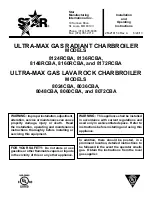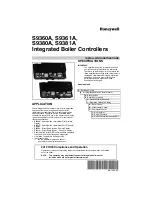
7 181 465 347 (01.07)
Appendix
49
5.5
Detecting corrosion by CFCs
Halogenated hydrocarbons in the combustion air cause
surface corrosion of the affected metal components.
The combustion chamber and the boiler heating sur-
faces (including stainless steel) are particularly suscep-
tible to this type of attack as are the metal components
in the flue socket, flue joints and the chimney.
The presence of halogenated hydrocarbons in the com-
bustion air results in the production of highly caustic
hydrochloric acid and - depending on the composition
of the combustion air - hydrofluoric acid which build up
inside the boiler and remain active over long periods of
time.
In order to limit the damage, the source of the contami-
nation must be located and sealed off. If this is not pos-
sible, the combustion air must be brought to the
appliance from an unaffected area.
Halogens can occur in the following areas:
Industrial sources
Dry cleaners
Trichloroethylene, tetrachlo-
roethylene, fluorinated hydro-
carbons
Degreasing baths
Perchloroethylene, trichlo-
roethylene, methyl chloroform
Printers
Trichloroethylene
Hairdressers
Aerosol propellants, hydrocar-
bons containing chlorine and
fluorine (Freon)
Sources in the home
Cleaning and
degreasing agents
Perchloroethylene, methyl
chloroform, trichloroethylene,
methylene chloride, carbon
tetrachloride, hydrochloric
acid
Hobby workshops
Solvents and thin-
ners
Various chlorinated hydrocarb
Aerosol sprays
Chlor-fluorinated hydrocar-
bons (Freons)
Table 9
Summary of Contents for ICC2 combi ZWBR 11-37 ICC2
Page 51: ...6 720 610 602 GB 03 02 Appendix 51 ...
Page 102: ...7 181 465 347 01 07 50 Appendix ...
Page 103: ...7 181 465 347 01 07 Appendix 51 ...
Page 104: ...Appendix ...
















































